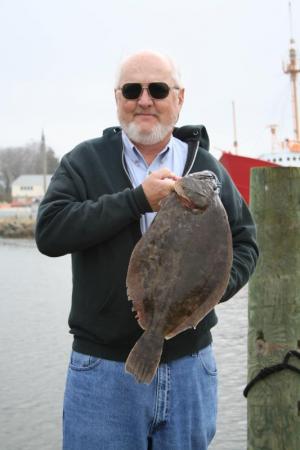Indian River Inlet best place to see current, tide in action
In the last two columns, I have talked about tides and current, and how they affect fishing. If you are unclear about how these forces of nature work, plan a trip to Indian River Inlet about an hour before your tide chart says high tide. You will observe the tide and the current at their strongest as they both work together. The tide will be rising and the current will be running in toward the Back Bays.
When your tide chart says high tide, the tidal wave caused by the gravitational force of the moon will be opposite the inlet and the tide will be at its highest point. The water level will begin to drop down, but the current flow will still run in. This will continue for about an hour and a half; then the current will be slack for a short time before it begins to run out.
As you watch the water going in and out, look for eddies caused by the rocks that protrude into the inlet. You will also see eddies and rips in the deeper water as well as standing waves where the ocean and the inlet meet.
If you stand on the northside by the fenced-off area west of the bridge, you will notice the water moves in a big circle, so it actually goes by the shoreline toward the ocean on incoming water. There are a few other locations at the inlet where this happens, and all are caused by the structure below the water.
You need to take time to observe the behavior of the water during all stages of the tide, but if you can get there during the last of the incoming and the first of the outgoing, you will get a very good idea of the relationship among tide, current and structure. This relationship is the same no matter where you fish. It’s just more dramatic and easier to see at the inlet.
Flounder fishing 101
Going under the assumption that flounder are the most popular fish for most anglers in our area, we will look at where and how to catch them. Let me say from the start, the techniques I will talk about work for me. If you have a completely different way of flounder fishing that works for you, great. Don’t change a thing.
I strongly believe that an early start is the key to a successful flounder, or for that matter, any fishing trip. My friend Jeff Waxman disagrees. He never leaves the dock before the crack of 10 a.m. He usually has success, so who am I to argue?
Let’s begin with the Lewes-Rehoboth Canal. This is a narrow, shallow piece of water that gets crowded on most summer days and very crowded on the weekends. This is why I get there at first light and try to leave before noon.
Depending on the current flow, I will either run up to the Freeman Bridge and drift back to Roosevelt Inlet or begin my drift at the inlet and move down to the Freeman Bridge. Some days I will be lucky and have incoming water to drift down to Lewes and then have outgoing to drift back to the inlet.
I will fish with two rods. One will have a live minnow and no weight while the other will have a green-headed half-ounce bucktail and an orange Gulp! crawfish. The unweighted minnow will swim behind the boat with the rod in a holder while I hold the rod with the bucktail and jig it constantly on the bottom.
I control the boat with an electric trolling motor. I try to hit as many docks as possible and jig the bucktail in the eddies behind the pilings. Along the marsh, I will run the boat close to the edge, going from shallow to deep and back again. If I catch a flounder alongside a piling or at a certain part of a marsh, I will go back and hit that spot again. If the flounder seem to be in a certain depth of water, I will try to keep the boat at that depth. It makes no sense to catch one flounder and just keep on drifting. These fish do feed in groups, and where there is one, others are likely to be found.
When fishing the canal, you must be aware of boat traffic. Charter and head boats are restricted in their ability to maneuver due to the narrow waterway, so you must look out for them.
The idea is to hit as many flounder holding spots as possible. Just drifting aimlessly from one end of the canal to the other may find you a fish or two, but you will go past many more than you will catch.





















































